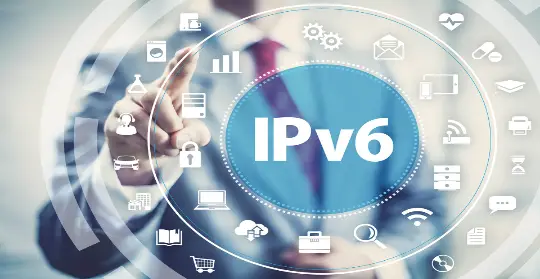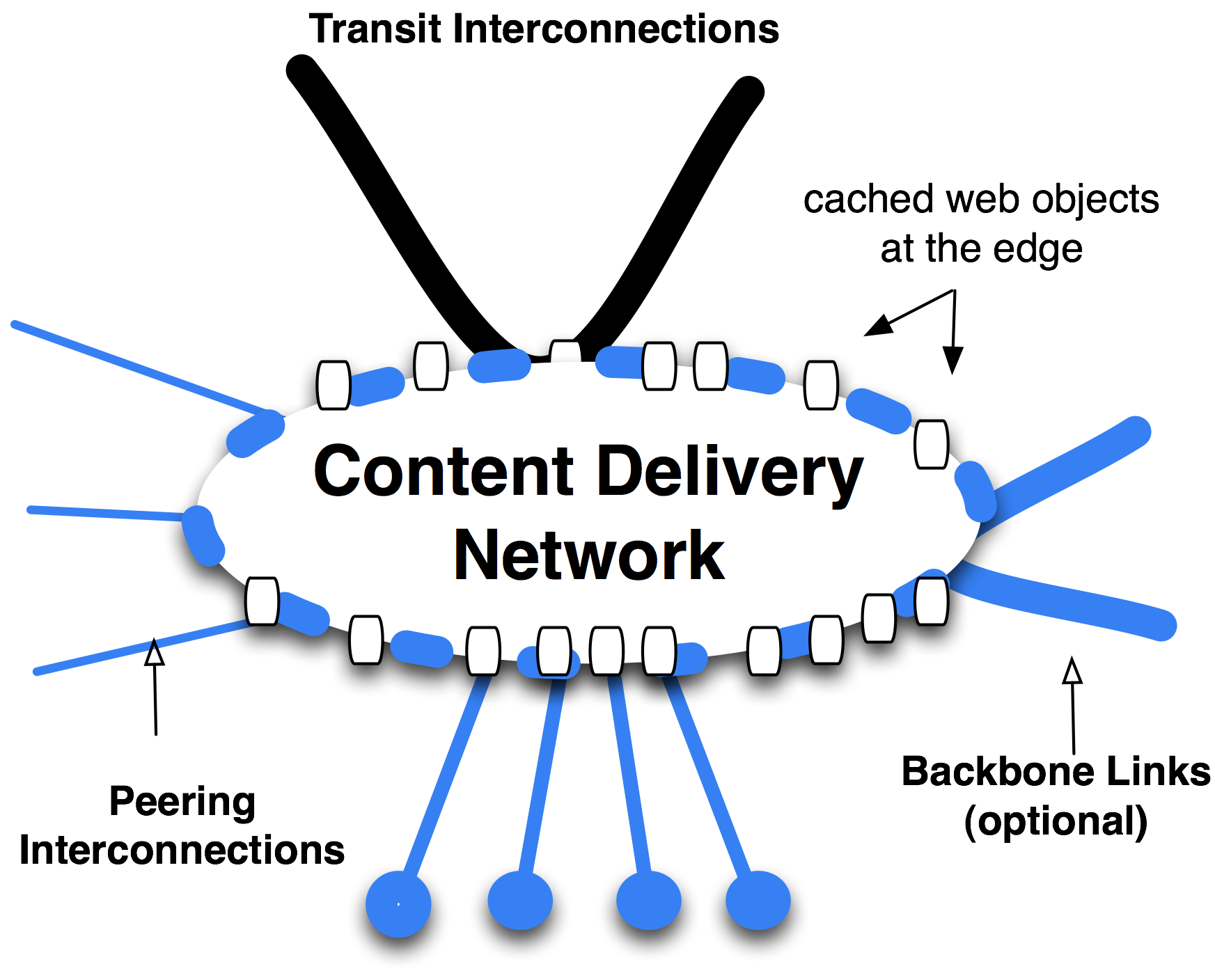Content Delivery Networks (CDNs)

Adaptations for Next-Generation Internet Protocols (NGIPs)

1. Multi-Path Transmission:

- NGIPs, such as QUIC and HTTP/3, support multi-path transmission.
- CDNs can leverage this to distribute content across multiple paths simultaneously, improving reliability and reducing latency.
2. Stream Control Transmission Protocol (SCTP):
- SCTP is a reliable transport protocol designed for applications requiring ordered and guaranteed data delivery.
- CDNs can use SCTP to ensure reliable delivery of large content files, such as video and software updates.
3. QUIC:
- QUIC is a secure and efficient transport protocol built on UDP.
- CDNs can adopt QUIC to enhance the performance of content delivery, reducing latency and improving throughput.
4. HTTP/3:
- HTTP/3 is the latest version of HTTP that leverages QUIC as its transport.
- CDNs can implement HTTP/3 to gain the benefits of QUIC, such as faster page loading times and reduced resource usage.
5. IPv6 Support:
- IPv6 is the successor to IPv4, offering a larger address space and improved security.
- CDNs can upgrade their networks to support IPv6 to take advantage of these benefits.
6. Network Function Virtualization (NFV) and Software-Defined Networking (SDN):
- NFV and SDN allow CDNs to virtualize network functions and optimize routing and traffic management.
- This enhances the flexibility and scalability of CDN platforms, enabling them to better adapt to NGIP requirements.
7. Edge Computing:
- Edge computing brings computing and storage capabilities closer to end-users.
- CDNs can utilize edge computing to cache and process content at the edge, reducing latency and improving user experience.
Benefits of CDN Adaptations for NGIPs:
- Reduced latency and improved throughput
- Enhanced reliability and data integrity
- Improved performance and scalability
- Reduced resource consumption
- Increased agility and flexibility
- Enhanced security and compliance## [Cdn Adaptations For Next-generation Internet Protocols]
Executive Summary
The advent of next-generation internet protocols (NGIPs) such as IPv6 and HTTP/3 is poised to revolutionize the way we experience the internet. These new protocols offer a range of benefits over their predecessors, including increased speed, security, and reliability. However, to fully capitalize on the potential of NGIPs, content delivery networks (CDNs) need to adapt their architectures and technologies. This article explores the key CDN adaptations required for NGIPv6 and HTTP/3 adoption.
Introduction
Content delivery networks (CDNs) play a critical role in the delivery of online content, ensuring fast, reliable, and secure access to websites, videos, and other digital assets. With the emergence of next-generation internet protocols (NGIPs) such as IPv6 and HTTP/3, CDNs need to adapt their architectures and technologies to fully harness the benefits of these new protocols.
FAQs
1. What is IPv6?
IPv6 is the next-generation internet protocol that succeeds IPv4. It offers a vastly expanded address space, improved security, and more efficient routing.
2. What is HTTP/3?
HTTP/3 is the next-generation HTTP protocol that replaces HTTP/2. It introduces a new transport layer protocol called QUIC, which offers improved performance and security.
3. Why do CDNs need to adapt to NGIPs?
CDNs need to adapt to NGIPs to fully leverage their benefits, such as increased speed, security, and reliability. By optimizing their networks for NGIPs, CDNs can improve the performance of online content delivery and enhance the user experience.
Subtopics
IPv6 Adaptation
- Support for IPv6 Address Space: CDNs need to expand their network infrastructure to support the vast IPv6 address space and enable seamless connectivity with IPv6-enabled devices.
- Dual-Stack Implementation: CDNs should adopt a dual-stack architecture that supports both IPv4 and IPv6 simultaneously, ensuring backward compatibility and a smooth transition to IPv6.
- DNS Resolution for IPv6: CDNs need to enhance their DNS infrastructure to resolve IPv6 addresses efficiently and provide fast and reliable lookups for IPv6-based content.
- IPv6 Routing Optimization: CDNs should optimize their routing algorithms to prioritize IPv6 traffic, ensuring efficient delivery of content over IPv6 networks.
- Content Replication for IPv6: CDNs should replicate content across IPv6-enabled servers to improve availability and reduce latency for IPv6-capable users.
HTTP/3 Adaptation
- QUIC Protocol Support: CDNs need to integrate the QUIC protocol into their networks to take advantage of its performance and security benefits.
- HTTP Fallback Mechanisms: CDNs should implement HTTP fallback mechanisms to ensure compatibility with older browsers and devices that do not support HTTP/3.
- Early HTTP/3 Adoption: CDNs should actively promote the adoption of HTTP/3 and encourage website owners to upgrade their servers to support the new protocol.
- Performance Monitoring and Optimization: CDNs should monitor the performance of HTTP/3 traffic and implement optimizations to ensure optimal delivery of content over HTTP/3.
- Collaboration with Origin Servers: CDNs need to work closely with origin servers to configure and optimize their HTTP/3 settings for maximum performance and security.
Security Enhancements in NGIPs
- TLS 1.3 Implementation: CDNs should adopt the latest version of the TLS protocol, TLS 1.3, to provide enhanced encryption and security for content delivery.
- DNSSEC Support: CDNs should support DNSSEC (Domain Name System Security Extensions) to protect against DNS spoofing and ensure the integrity of DNS data.
- DDoS Mitigation: CDNs should implement effective DDoS mitigation measures to protect their networks and customers from distributed denial-of-service attacks.
- Content Integrity Verification: CDNs should adopt content integrity verification techniques to ensure that content is not tampered with or corrupted during delivery.
- Compliance with Emerging Security Standards: CDNs should stay abreast of and comply with emerging security standards and regulations to ensure the protection of user data and online assets.
Performance and Efficiency Improvements
- Network Optimization for Latency Reduction: CDNs should optimize their network infrastructure to minimize latency and ensure fast delivery of content to end users.
- Content Caching and Compression: CDNs should leverage advanced caching and compression techniques to reduce bandwidth consumption and improve the efficiency of content delivery.
- Intelligent Traffic Routing: CDNs should implement intelligent traffic routing algorithms to optimize the delivery of content based on user location, network conditions, and content type.
- Load Balancing and Scalability: CDNs should implement effective load balancing and scalability mechanisms to handle high traffic volumes and ensure seamless content delivery under peak load conditions.
- Automation and Orchestration: CDNs should automate and orchestrate their operations to improve efficiency, reduce operational costs, and enhance overall network performance.
Conclusion
The adoption of next-generation internet protocols (NGIPs) presents both challenges and opportunities for CDNs. By adapting their architectures and technologies, CDNs can fully capitalize on the benefits of NGIPs and enhance the delivery of online content. These adaptations will not only improve the performance, security, and reliability of content delivery but also pave the way for innovative and immersive online experiences. As NGIPs continue to gain widespread adoption, CDNs that embrace these adaptations will be well-positioned to meet the evolving demands of the internet and drive the next phase of digital transformation.
Relevant Keyword Tags
- Content Delivery Network (CDN)
- Next-Generation Internet Protocols (NGIPs)
- IPv6 Adaptation
- HTTP/3 Adaptation
- CDN Performance Optimization
